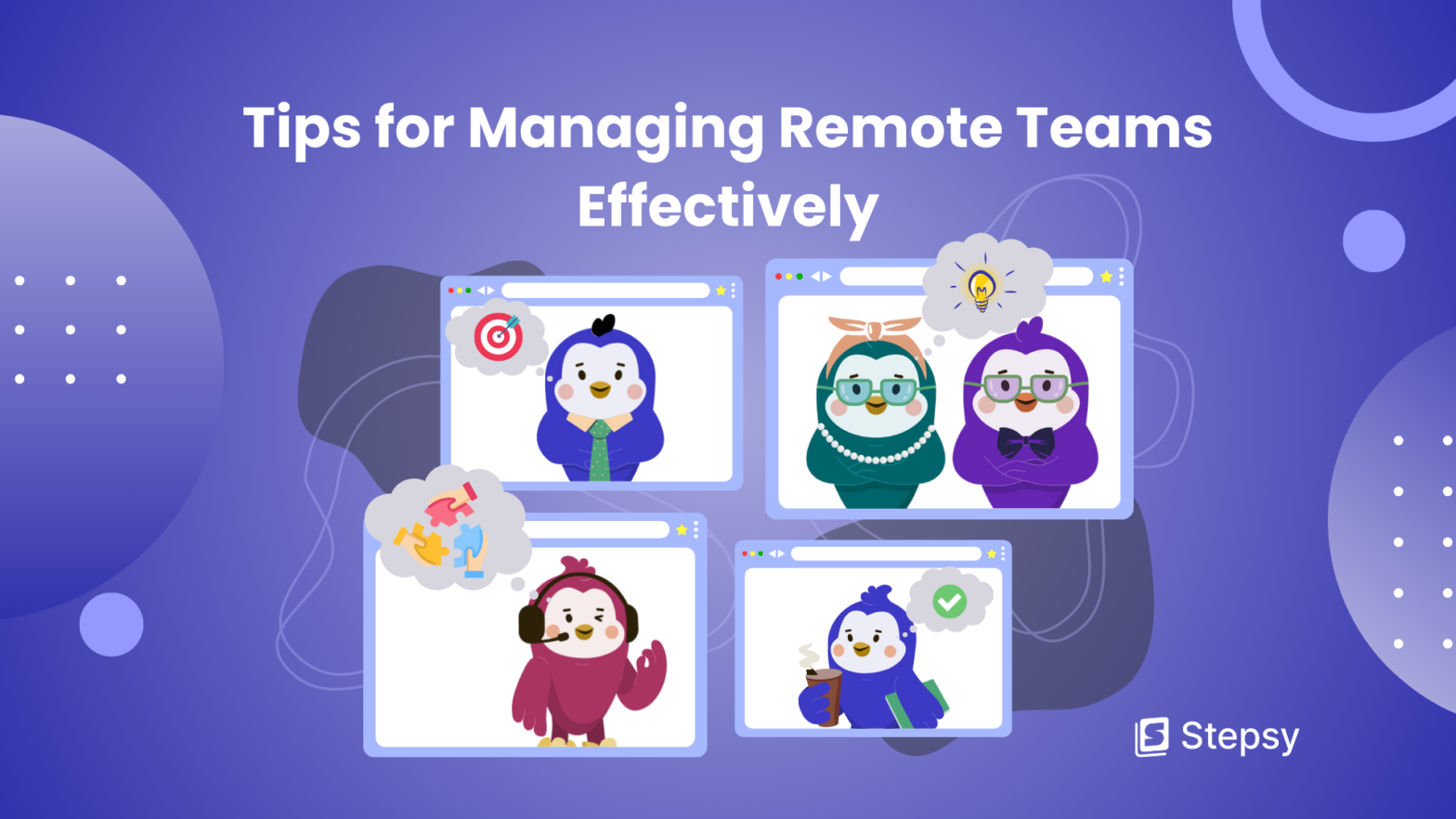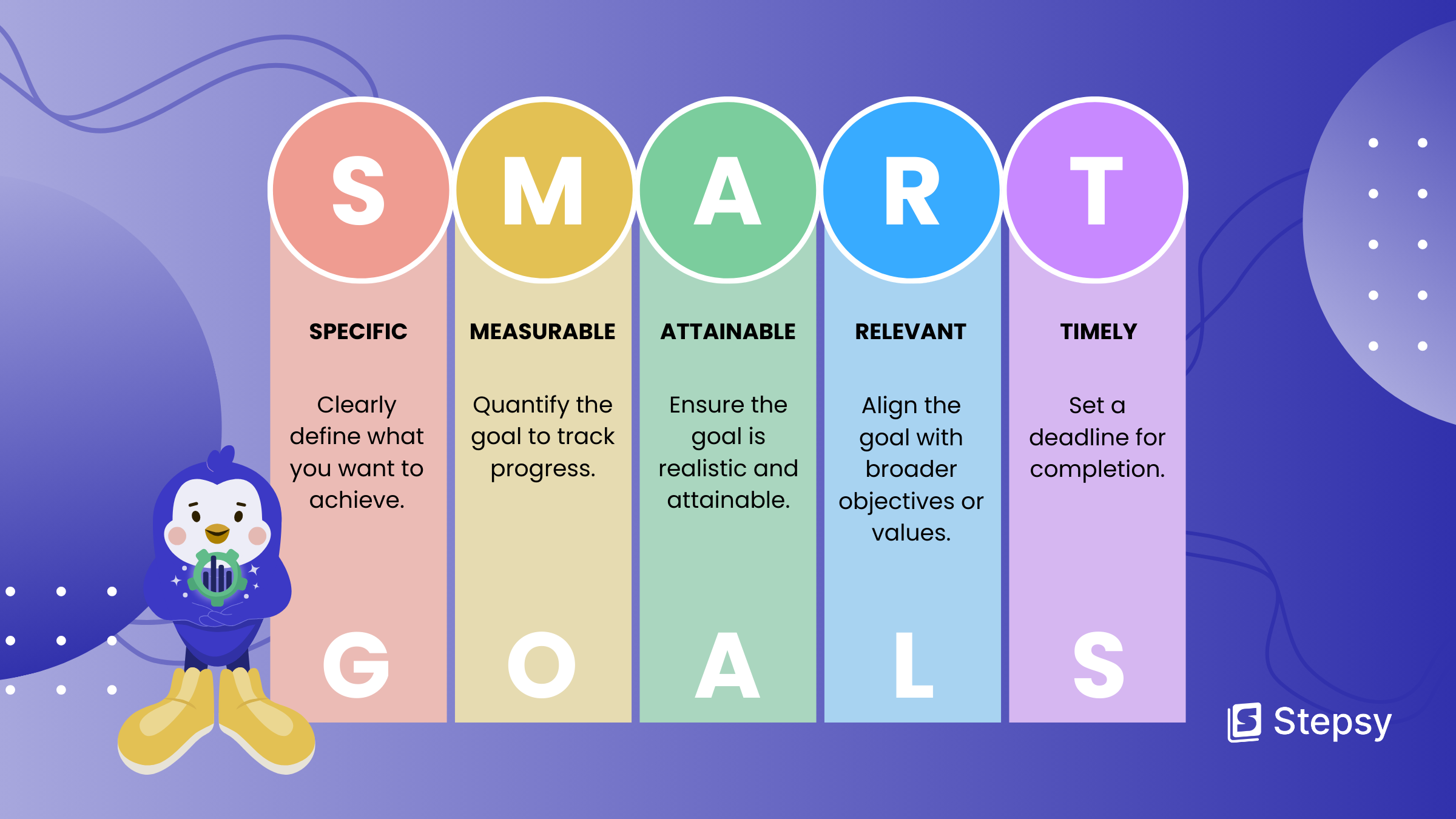Tips for Managing Remote Teams Effectively

 Iryna Smuk • 03 Sep 2024
Iryna Smuk • 03 Sep 2024
Picture this: A thriving team scattered across continents, each member contributing to a project while sipping coffee in different time zones. The freedom of remote work has opened up a world where talent knows no geographic boundaries. But with this newfound flexibility comes the challenge of keeping the ship steady. That’s why remote team management has become a key skill in our global work environment.
The benefits of remote work are undeniable — access to a broader talent pool, reduced overhead costs, and the potential for a better work-life balance. However, the complexities of managing remote workers can’t be overlooked. From ensuring clear communication to fostering a sense of belonging, remote team management demands a strategic approach.
But how to manage a remote team effectively? How to make sure that the remote workforce stays motivated and engaged when they’re not physically together? How to maintain productive communication and collaboration in a virtual environment? If you have these questions, you are in the right place. Here, you’ll find proven tips and best practices for managing a remote team. Our guide will equip you with the necessary tools to lead effectively and maintain a cohesive, productive team.
1. Setting Clear Expectations
One of the cornerstones of effectively managing remote teams is setting clear expectations. In a traditional office environment, it’s easier to gauge whether everyone is on the same page. Impromptu conversations and meetings help clarify roles and responsibilities. However, when managing remote workers, this clarity can easily be lost. It can lead to misunderstandings and misaligned efforts.
Firstly, it’s important to set clear roles across your remote team. Make sure each individual knows exactly what is expected of them, how their work contributes to the broader goals, and who they can turn to for support. The result? Remote employees take ownership of their tasks, knowing they are part of a larger, well-orchestrated effort.
Secondly, setting clear expectations is a must. A powerful tool that can help you is the SMART goal framework.

SMART goals are:
- Specific: Clearly outline what needs to be accomplished. It helps remote team members understand exactly what is expected
- Measurable: Ensure there are metrics in place to track progress. It enables the team to monitor their progress and make adjustments as needed to stay on track.
- Achievable: Set goals that are realistic given the resources and time available. Unrealistic expectations can lead to frustration and burnout.
- Relevant: Align the goals with the broader objectives of the company or project. This relevance connects individual tasks to the larger company vision.
- Time-bound: Establish a clear timeline for achieving the goals. This adds a sense of urgency and helps keep the team focused on delivering results within the agreed timeframe.
For example, rather than telling a remote employee to “enhance the company’s social media engagement,” specify the action by saying, “Increase the company’s social media engagement rate by 15% within the next three months through targeted content strategies.”
What results will you get? You will ensure that everyone works toward the same objectives with a shared understanding of success.
2. Communication is Key
Unlike traditional office settings where spontaneous conversations and in-person meetings facilitate smooth interactions, fully remote work requires a more structured approach to guarantee that team members stay connected, accountable, and engaged.
Regular Check-Ins
You should set up regular check-ins to see how your remote workers are handling their workloads. These meetings can be daily, weekly, or monthly, depending on the team’s needs and preferences. They can be performed as group meetings with everyone and also as 1:1s.
These meetings show your employees that you care about their well-being as well as foster a sense of unity, reducing the sense of isolation that can come with working remotely.
Choosing the Right Tools for Communication
Selecting the right communication tools is necessary for productive remote team management. There are plenty of tools on the market that offer a variety of features to enhance collaboration and streamline communication.
Some popular options include:
- Slack: This tool is excellent for creating channels dedicated to different projects or topics, enabling real-time messaging, file sharing, and integration with other productivity apps.
- Microsoft Teams: Ideal for larger teams or organizations, it provides features for video conferencing, team collaboration, and document sharing. It also integrates seamlessly with Microsoft Office 365, allowing remote employees to work on documents simultaneously and maintain version control.
- Zoom: A video conferencing tool that is great for team meetings, webinars, and presentations.
Encouraging Open Communication
But here is a fundamental thing to remember — regular check-ins and having the right tool for communication are not enough! You should foster an environment where team members feel comfortable sharing ideas and concerns. This is the most important part of successful remote team management. An open communication culture encourages remote employees to voice their thoughts and feedback.
Here are some tips for building an open communication environment:
- Create a safe space: Make it clear that all team members are valued and respected, and that their opinions matter.
- Practice active listening: Show genuine interest in what others have to say, and avoid interrupting.
- Encourage feedback: Regularly solicit feedback from team members on their work, the team’s processes, and the company’s culture.
- Lead by example: Demonstrate open communication by sharing your own thoughts and feelings honestly and transparently.
3. Building a Strong Team Culture
Building a strong remote culture can be challenging. However, to maintain morale and foster a sense of belonging among remote team members, you should do everything in your power to build it.
As there is a lack of the daily face-to-face interactions of a traditional office, creating opportunities for connection becomes even more critical. Nevertheless, even in a remote setting, some activities can help build camaraderie among team members. Here is our recommendation:
- Virtual Team-Building Activities: Online activities like virtual escape rooms, trivia games, or talent shows can help team members get to know each other better and interact together in a fun, informal setting
- Collaborative Projects: Collaborating on non-work-related projects or hobbies, such as a book club or a shared playlist, allows employees to connect over shared interests.
- Virtual Lunch Meetings: Since food is one of the best ways to bring people together, scheduling such lunches mimics the experience of dining together in a traditional office environment.
- Remote Movie Nights: Watching the same film simultaneously and discussing it afterward is another fun and relaxed way for remote team members to bond over shared interests.
Moreover, recognition plays a significant role in boosting team morale and motivation, especially in a remote environment where direct feedback and acknowledgments can be less frequent. You should regularly acknowledge and celebrate individual and team achievements. It is useful to implement formal recognition programs, such as employee of the month awards or achievement badges, which can be tracked and celebrated remotely. This way, workers feel valued and connected, contributing to a more engaged and motivated workforce.
4. Optimizing Remote Employee Onboarding
Effective onboarding is fundamental for integrating new employees into your remote team. You should ensure that they feel welcomed, informed, and equipped to contribute from day one.
Make a detailed introduction to the company’s mission, values, and culture. It helps new hires understand the broader goals they’ll be contributing to. Also, present a directory of team members, their roles, and contact information, along with a welcome message from the team.
Additionally, provide clear instructions on how to set up necessary software and how to use them. It is also useful to have process documentation. It can be in the form of step-by-step guides, SOPs, or manuals, giving clear, standardized procedures that everyone on the remote team can follow. Moreover, there are a lot of tools that can simplify the process of documentation.
For example, Stepsy makes this so much easier by generating step-by-step guides with screenshots on your every click in the web browser. Stepsy allows you to capture and retain the company’s knowledge in a structured, easy-to-access format, ensuring that the remaining team can continue functioning smoothly, with minimal disruption.
5. Managing Productivity and Performance
To ensure that team members stay on track and meet their goals in a remote work environment, you need to manage productivity and performance.
Implementing Productivity Tools
Without the benefit of physical oversight, managers must rely on tools to maintain high standards of work. Here are a few recommendations:
- Asana: Being a project management tool, it helps teams organize tasks, set deadlines, and track progress.
- Trello: With this software, you can create boards for different projects, assign tasks to team members, and track progress in real time.
- ClickUp: It offers a range of features, including task management, document sharing, goal setting, and time tracking.
Providing Feedback and Support
Regular feedback helps employees understand their performance and areas for improvement. In a remote setting, feedback must be clear, constructive, and delivered in a way that motivates and supports team members.
Take time to schedule regular one-on-one meetings with remote employees to discuss their progress, challenges, and any support they might need. You should focus on being specific and actionable. Plus, don’t forget to recognize and celebrate successes, no matter how small.
6. Fostering Work-Life Balance
When the lines between work life and home life blur, remote employees can struggle to maintain boundaries. It can cause burnout and decreased motivation. Managers should encourage habits that promote a balanced lifestyle. Here are some tips that can help with building work-life balance:
- Setting Clear Work Hours: This doesn’t mean that everyone needs to work the same hours, but rather that each team member should have a consistent routine that the rest of the team can rely on.
- Respecting Personal Time: Respecting personal time is just as important as setting clear work hours. Encourage team members to log off and disconnect after their designated work hours.
- Promote Regular Breaks.: To maintain the productivity and focus of your employees, you need to recommend taking short breaks throughout the day to recharge.
7. Continuous Improvement
Continuous improvement requires a proactive approach to adjusting your strategies in response to team input and changing circumstances. Involve members in the process of implementing changes as these modifications directly impact their work. As the nature of remote work can change rapidly, companies should stay agile by periodically reassessing their management style and being willing to pivot when necessary.
Conclusion
Successfully leading remote and hybrid teams requires a thoughtful and proactive approach that adapts to the unique challenges of virtual work. The best practices for managing remote teams can make all the difference in how effectively your team operates.
7 tips for managing a remote team include:
- Setting Clear Expectations: Establish clear roles, responsibilities, and goals to avoid misunderstandings and help ensure that everyone works towards the same objectives.
- Communication is Key: Foster open communication channels, use tools like Slack or Microsoft Teams, and schedule regular check-ins to maintain connection and accountability.
- Building a Strong Team Culture: Encourage team-building activities, recognize and reward employees, and create a sense of belonging and community.
- Optimizing Remote Employee Onboarding: Develop an extensive onboarding plan to help new hires feel welcome and supported.
- Managing Productivity and Performance: Remote managers need to invest in productivity tools, provide regular feedback, and support employee development.
- Fostering Work-Life Balance: Encourage remote employees to get enough rest, set clear boundaries between work life and home life, and promote a healthy work-life balance.
- Continuous Improvement: Businesses should stay agile and open to changes, as it allows them to overcome the challenges of leading remote and hybrid teams.
As we can see virtual collaboration is here to stay. Thus, remote team management will continue to evolve. We’re here to help you navigate these changes and lead your whole team to success in the world of remote work.


